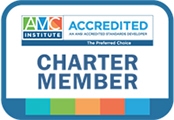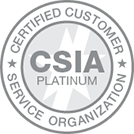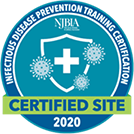Anyone who has ever played the board game Pictionary will understand this concept. One person is given the task of drawing a picture of a person/place/animal, action, object or the ubiquitous difficult. The pictures cannot contain any numbers or letters, nor can the artist use verbal clues about the subject he/she is drawing. The teammates try to guess the word the drawing is intended to represent. This is very easy task when the word is “carrot” or “cat,” but things become far more difficult when the word is “morality.” Imagine playing Pictionary on a team of 10 people, and the group has to draw one picture for hundreds of people. If this scenario sounds familiar, you have probably been involved in developing mission and vision statements. An important function of volunteer leadership involves helping to define why the association exists, who it serves and what the future holds. The process of “drawing” both the mission and vision statements are the first steps in this critically important process. Both statements are inspiring words chosen by successful volunteer leaders to clearly and concisely convey the direction of the association. By crafting a clear mission statement and vision statement, one can powerfully communicate intentions and motivate both staff and volunteers to realize an attractive and inspiring common vision of the future.
Mission Statement
A mission statement is a written description explaining why the association exists, the members it serves and the group’s core values. The mission is relatively fixed and unchanging. It changes only after careful consideration of the internal and external factors impacting the organization. The mission statement is a key tool used by volunteer leaders as part of the strategic plan. It captures, in a few succinct sentences, the essence of the association’s goals and its underlying philosophies. Equally important, the mission statement explains the association’s purpose to members, staff, committees and sponsors.
Sketching the Mission
Think back to the game of Pictionary. If tasked with drawing a tree, you probably wouldn’t spend too much time detailing all the branches or leaves. Simply sketching the trunk and outline of the leaves would suffice. The same can be said about creating a mission statement. Try to sum up the entire association’s mission in one or two sentences. A mission statement, at its best, should be able to double as a slogan. Concise mission statements are more memorable and effective. Like the tree drawing, there is no need to make it overly complicated; just state the purpose of the association and the reason for starting it in the first place. Members and key stakeholders should be able to “guess” the association’s purpose by reading this statement.
Mission Statement Examples
Harley–Davidson Inc: We fulfill dreams through the experience of motorcycling, by providing to motorcyclists and to the general public an expanding line of motorcycles and branded products and services in selected market segments.
American Heart Association: Building healthier lives, free of cardiovascular diseases and stroke.
NIKE: To bring inspiration and innovation to every athlete in the world.
Vision Statement

Vision Statements also define the association’s purpose, but these statements do so in terms of what the group wants to achieve in the future. It should resonate with volunteer leaders and members and help them feel proud, excited and part of something much bigger. The vision should stretch the boundaries of the current state of the association. It gives meaning, shape and direction to the association’s goals, objectives and tasks. The process of strategic planning begins with the vision and works backwards. Understanding the association’s goals and stating them clearly is the first step toward making them happen.
How to Draw a Vision of the Future
The task of penning a vision statement and describing what the future holds seems overwhelming, but isn’t too difficult. Could you draw a futuristic car? What about drawing an ideal house? Defining the vision is a volunteer leader’s opportunity to be creative, act as a leader and help guide the association into the future. To begin the process, think about what the association does and what, in an ideal world, it would do. Think about the way the association should appear to the outside world. Consider the services and benefits the association provides, and imagine it functioning at its absolute highest capabilities. List those visions, and incorporate them into a brief statement giving a good overview of the desired image. Similar to drawing a mission statement, brevity and succinctness are crucial.
The key to a good vision statement involves thinking of things in a long-term, broad sense without sounding generic. Specificity will limit the vision, and the statement won’t be applicable in the future. For example, if a vision focuses solely on acquiring a certain number of members, the vision may be limiting or dismissing other qualities and services the association offers. On the other hand, a vision statement claiming the association wants to achieve success or be the most recognizable association in its field is too generic. The best statements are clear about the association’s identity as well as what it wishes wish to become in the future.
Vision Statement Examples

Make-A-Wish: Our vision is that people everywhere will share the power of a wish.
Amazon: Our vision is to be earth’s most customer centric company; to build a place where people can come to find and discover anything they might want to buy online.
Teach for America: One day, all children in this nation will have the opportunity to attain an excellent education.
The Game Continues
Now, if the drawings are complete, the work is done, right? No way. The newly approved mission statement should be communicated to the volunteer workforce, staff and relevant stakeholders. Include the statement on the association website, letterhead and media communications to broadcast its message. As a volunteer leader, include the mission on Board agendas, and refer to it when making important decisions—is this decision in line with our mission? Volunteer leaders should also be revisiting the long-term vision more than just once a year. Save time quarterly or biannually during Board meetings to ask—are we any closer to our shared vision? And, if not, why? Has something happened in the current environment to make the Board consider altering the vision? Volunteer leaders who treat the mission and vision statements as simply words on a piece of paper are losing out. After all, they aren’t just words, they’re pictures—pictures carefully drawn by volunteer leaders who care, and, if done effectively, these pictures will lead the association to succeed and win.

From Uniting to Leading: A Client Case Study on the American Association of Heart Failure Nurses (AAHFN)
When the AAHFN Board of Directors met for its strategic planning session, the association was in the middle of a growth spurt. Just eight years old at the time, the association had grown immensely since its inception—from 110 members to more than 1,600. In addition, the healthcare landscape was changing, putting an emphasis on nurses. Heart failure patients’ hospital readmissions were strongly scrutinized. The AAHFN Board recognized it was at a central point in the association’s maturation, and it decided to revaluate its mission statement at a meeting.
The mission statement at the time of the meeting certainly described the association’s programs and members, and it described the way AAHFN united members for a common goal:
To unite professionals in the support and advancement of heart failure practice, education and research to promote optimal patient outcomes.
The Board agreed the mission statement described the association well, but the group felt something was missing. There was open dialogue about the direction the association was taking, and an important question was asked—why does AAHFN exist? For an organization with only eight years under its belt, AAHFN was responsible for building programs, uniting members and reacting to the environment. However, the Board agreed its role, and that of the association as a whole, needed to shift from a reactive mentality to a proactive one. The one recurring word during the conversation was “lead.” The Board wanted to be able to ensure members were prepared for the future, aware of healthcare changes and in the best possible position to deliver expert patient care. The revised mission statement was:
Leading nurses in heart failure care
The revised statement is simple, memorable and easily describes the reason for the association’s existence. But this new statement was more than just words, it was a new philosophy. It positioned AAHFN to be more proactive in the way programs, benefits and initiatives were chosen and prioritized. The Board was no longer going to try to accomplish everything or react to what others were doing. Rather, Board meetings focused on ways for the association to lead nurses in heart failure care.
Since the revised mission was adopted, AAHFN has developed two new in-person meetings, online educational programming and a publication about Basic Heart Failure targeted towards less experienced nurses. All of these programs have been a success because the Board recognized and acted on an unmet need in the community. AAHFN is truly leading nurses in heart failure care and continues to succeed.




